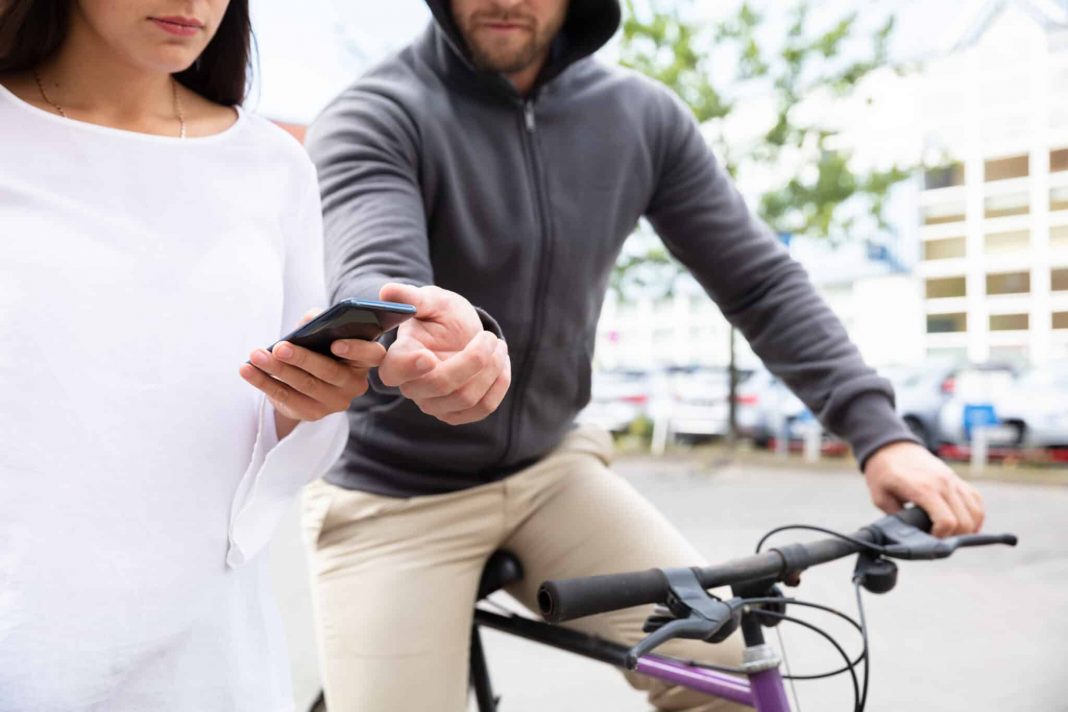The Government has launched a crackdown on snatch thefts of mobile phones and bags after incidents with phones skyrocketed by 150%.
As part of the initiative, tech companies and manufacturers will be called to a Home Office summit that aims to improve the current anti-theft software built into the devices.
Police intelligence will also launch a probe into where stolen mobile phones end up under Operation Opal. Once launched, it hopes to have a better idea of the stolen phone market.
As well as that, local police forces will target the areas most likely to have serious violence involved with phone snatching to prevent future incidents from occurring. This means a heightened police presence in 1,250 hotspots to deter criminals.
It comes as around 78,000 people had their phones or bags grabbed from them on the street, as the market for second-hand smartphones has increased in demand. In total, that works out to 200 personal robberies on the street per day, which is 60% higher than the annual average since 2012/13.
Indeed, over a third (36%) of all snatch thefts in the last 12 months involved a mobile phone, according to estimates from the Crime Survey for England and Wales.
Levels of theft are ‘troubling’
Diana Johnson, policing minister, described the figures regarding the thefts as “troubling”.
Johnson said: “The Government is determined to do whatever’s necessary to protect people entitled to walk the streets without the threat of robbery.”
The newly appointed Secretary of State added: “Phone companies must ensure that any stolen phones can be quickly, easily and permanently disabled, rather than re-registered for sale on the second-hand market, and we will be meeting them soon to discuss what further action is required to make that happen.
“If we work together, Government, tech companies and law enforcement can break the business model of the phone thieves and moped gangs who rely on this trade.”
Richard Smith, the commander of the National Police Chiefs’ Council lead for personal robbery, says the police force “cannot arrest its way out of this problem”.
Smith said: “Manufacturers and the tech industry have an important role in reducing opportunities for criminals to benefit from the re-sale of stolen handsets.”
How safe is your banking app from thieves?
Meanwhile, 71% of all Brits are estimated to use banking apps to manage their finances, according to a separate study by CompareBanks.
Earlier this summer, Revolut launched a new piece of technology to protect account holders who had their face or fingerprint recognition compromised.
The ‘Wealth Protection’ setting needs to be turned on in the app, and when activated, it will compare the selfie ID checks completed when you sign up to the Revolut app. The challenger bank says it is the first to implement this technology, which aims to stop criminals from transferring savings out of people’s accounts if they access a victim’s banking app.
Following the rising number of snatch theft incidents, YourMoney.com contacted Nationwide Building Society, Santander, Lloyds, NatWest and HSBC to see how those banks combat the chances of criminals accessing a victim’s banking app. We are still awaiting comments from NatWest and HSBC.
Nationwide Building Society statement
A Nationwide spokesperson said: “Our app security is extremely robust, including face ID, touch ID, passcodes, and device fingerprinting. The highest risk transactions are protected by facial biometric or card reader security, both of which connect the user of the device with the owner of the account, providing even greater protection.”
Santander statement
A Santander spokesperson said: “The Santander mobile banking app includes a security feature where any newly added biometric (or where there is a change to the biometric) results in the app temporarily disabling the biometric feature.
“Should this happen, customers are provided with a screen explaining how they can turn biometrics on again, after logging in using another method.”
The lender confirmed that if a change in face is detected on the biometrics of the device, “the very next launch of the Santander App sees us revert to the account holder’s Security Number.”
Lloyds Banking Group statement
“Helping to keep our customers’ money and data safe is our priority and we have robust and multi-layered security across our online and mobile banking services to protect our customers. We continually invest to deliver the right balance of online security measures, customer experience and accessibility”, a Lloyds spokesperson said.
They added: “We continually enhance our technologies to combat different sources of fraud. Access to our mobile app uses multi-factor authentication that protects access to the app even if the device is stolen and unlocked.
“Our software products continually work in the background to detect and alert to suspicious payment activity. Payments to new recipients from a mobile device also require a secondary authentication method that is not linked to the security of the device, to prevent criminals from stealing from customers.”
“Customers using our mobile banking apps will be automatically logged out as soon as they exit the app; they can also choose a personalised log-out period for inactivity of between one and five minutes.”
The provider also urged customers to contact Lloyds as soon as they can if a device is stolen or lost so it can immediately block access to any accounts.


